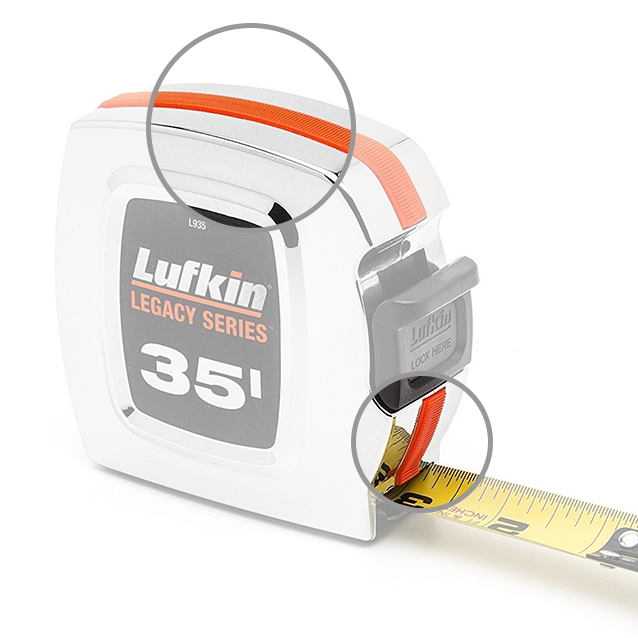The improved Legacy chrome tape is developed with today’s performance needs and features. The people-first approach yielded a vastly ergonomic tape while lowering the cost of manufacturing.
My role
Qualitative research . Ergonomic and usability study . Concept development . 3D modeling . Prototyping . Stakeholder and project management
The Opportunity
The Lufkin Legacy tape although iconic, had its fair share of problems. When the tape was developed in the 90s, it did not employ a user-first approach, but rather was marketed as a competitor to Stanley’s PowerLock.
The tape dug into the palm of the hand making it harder to work with for a long period of time.
The button was not ergonomically designed and was difficult to engage. Sharp corners around the perimeter made it uncomfortable to be held.
Addition of unnecessary components made the tape complex and costly to manufacture.
The Solution
The new Legacy tape is a thoroughly researched and user tested solution and an evolution to the already popular chrome tape from Crescent. It is a joy to hold with its sculpted body and the newly redesigned button makes it a piece of cake to take measurements all day.
Improved and modern aesthetics.
Ergonomically tested and developed.
Less is more. DFM and DFA conscious design.
Research
Market analysis and Ergonomic study
Competitor analysis was performed to understand the pros and cons of each tape. Ergonomic and usability factors were established that would allow each and every tape, including the present Legacy tape, to be evaluated objectively.
Points were awarded to competitors based on these factors. This exercise helped me understand where the Legacy tape stood with respect to its competitors and how I could leverage that to make a better measuring tape.
Design
Form Exploration
The bottom line when sketching, was to maintain the classic square shape Legacy tape was known for but bringing it into the 21st era with increased functionality and aesthetics.
3D modeling and Prototyping
No stones were left unturned in the ideation phase to determine the right form that would still be classic but looked to the future. Many form iterations were made and then prototyped to study ergonomics and comfort in use.
Sweating out the details
Different grip components were ideated. Finally I arrived at the molded-in grip, taking into account the cost constraints of this program.















